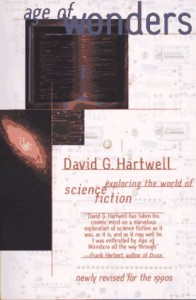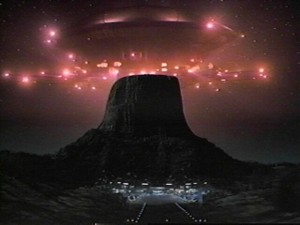 One of my readers posted a comment on a previous post of mine on Ray Bradbury which made me aware of the book Age of Wonders: Exploring the World of Science Fiction (Tor Books, 1996), by David Hartwell. I was able to pick up the 1984 version published by Walker and Company through Amazon (which I was surprised to find was autographed by the author), and I am pleased to recommend this book as one which provides some significant insights into science fiction. For those unfamiliar with Hartwell,
One of my readers posted a comment on a previous post of mine on Ray Bradbury which made me aware of the book Age of Wonders: Exploring the World of Science Fiction (Tor Books, 1996), by David Hartwell. I was able to pick up the 1984 version published by Walker and Company through Amazon (which I was surprised to find was autographed by the author), and I am pleased to recommend this book as one which provides some significant insights into science fiction. For those unfamiliar with Hartwell,
David G. Hartwell is the senior editor at Tor/Forge Books and the publisher of The New York Review of Science Fiction. A recipient of 2006 Hugo Award, and the World Fantasy and Eaton awards, he is the author of Age of Wonders, the editor of The World Treasury of Science Fiction, and the coeditor of two anthologies of the best Canadian science fiction, Northern Stars and Northern Suns.
Age of Wonders is written by a science fiction insider to help introduce and explain the genre to outsiders. it is written in a way that is as informative as it is entertaining. For me, two insights of Hartwell were especially noteworthy. The first relates to the cultural significance of science fiction fandom and conventions. While acknowledging a “surface frivolity,” Hartwell suggests that there is something far more significant at work. In his view:
There is no parallel more apt than the underground movements of the last two hundred years in Western civilization: the Romantics, the Modernists, the Beats. (Note to literary historians: This would make an interesting study.)
To outsiders, and to the media in most treatments of science fiction and other genre fans as little more than obsessive geeks or nerds, Hartwell recognizes that there is something of social and cultural significance in the not-so-underground movement that is science fiction fandom. I applaud his insight, and echo his call for historians and scholars in other disciplines to undertake a comparative analysis of science fiction in literature and other forms of expression as a legitimate social movement.
 The second significant insight comes in Chapter 3, “Worshiping at the Church of Wonder.” Breaking with past characterizations that science fiction and religion are incompatible, Hartwell says that,
The second significant insight comes in Chapter 3, “Worshiping at the Church of Wonder.” Breaking with past characterizations that science fiction and religion are incompatible, Hartwell says that,
A sense of wonder, awe at the vastness of space and time, is at the root of the excitement of science fiction…
To say that science fiction is in essence a religious literature is an overstatement, but one that contains truth. SF is a uniquely modern incarnation of an ancient tradition: the tale of wonder. Tales of miracles, tales of great powers and consequences beyond the experience of people in your neighborhood, tales of the gods who inhabit other worlds and sometimes descend to visit ours, tales of humans traveling to the abode of the gods, tales of the uncanny: all exist now as science fiction.
Science fiction’s appeal lies in its combination of the rational, the believable, with the miraculous. It is an appeal to the sense of wonder.
Here again I think Hartwell is on to something, particularly in the decades since he first wrote these thoughts as science fiction has continued to find increasing connections to wonder, myth, and even religion. For those who doubt this, in science fiction cinema consider two examples from Steven Spielberg. His Close Encounters of Third Kind presents the possibility of alien life and visitation of the Earth framed in religious ways, from the choir-like music at key points of the film, to the descent of the alien mothership that is reminiscent of the towering spires of ancient church cathedrals. As another example, in Minority Report the film raises questions of foreknowledge, free will, and priesthood, normally the stuff of religion in the past, but now nestled comfortably in science fiction discourse.
Given Hartwell’s insights into science fiction it would be interesting to see him update this volume to account for developments since the time of publication (perhaps the 1996 edition touches on some of this) to include the increasing popularity of fan conventions that some have seen paralleling religious pilgrimage, the incorporation of religious elements within science fiction by writers with religious and esoteric commitments, and the rise of hyper-real and fiction-based religions that draw upon science fiction and related genres, at times as sacred text.
For those interested in probing science fiction in more depth I recommend Hartwell’s Age of Wonders: Exploring the World of Science Fiction as an important part of any research bibliography.
Related posts:
“Understanding the Appeal of the Fantastic: Escape from the Habitus to Promised Lands”
“Airlock Alpha: Is There Too Much Religion in Science Fiction?”





There are no responses yet